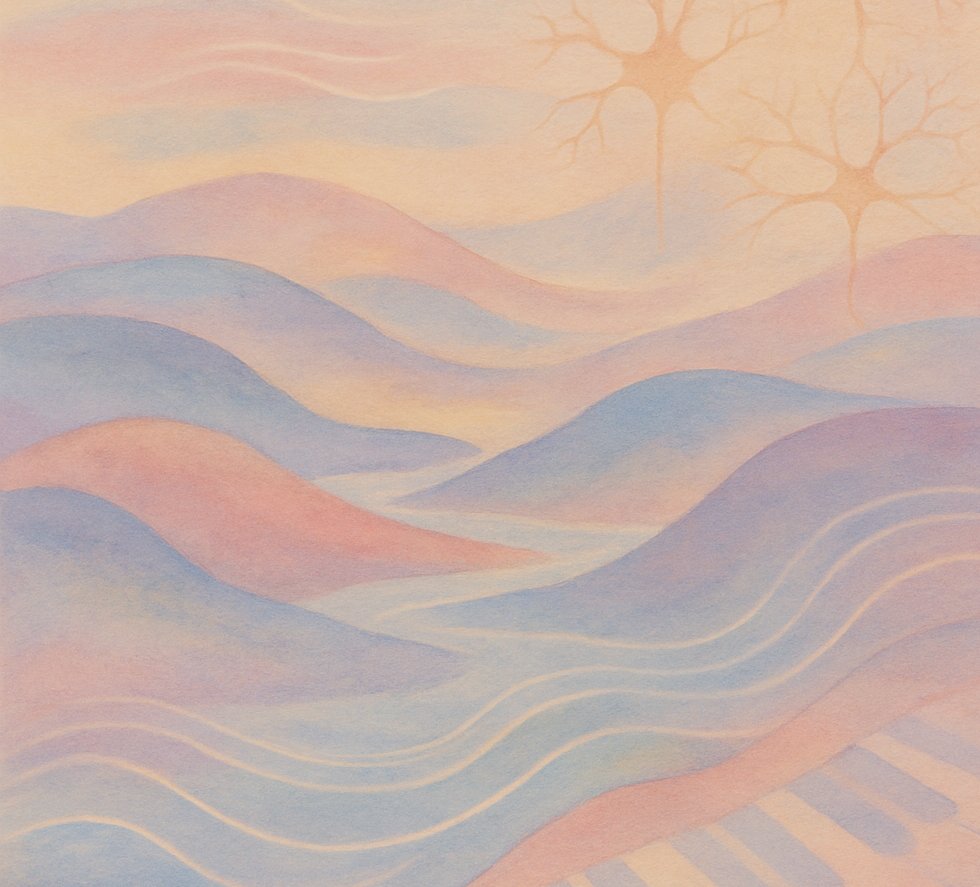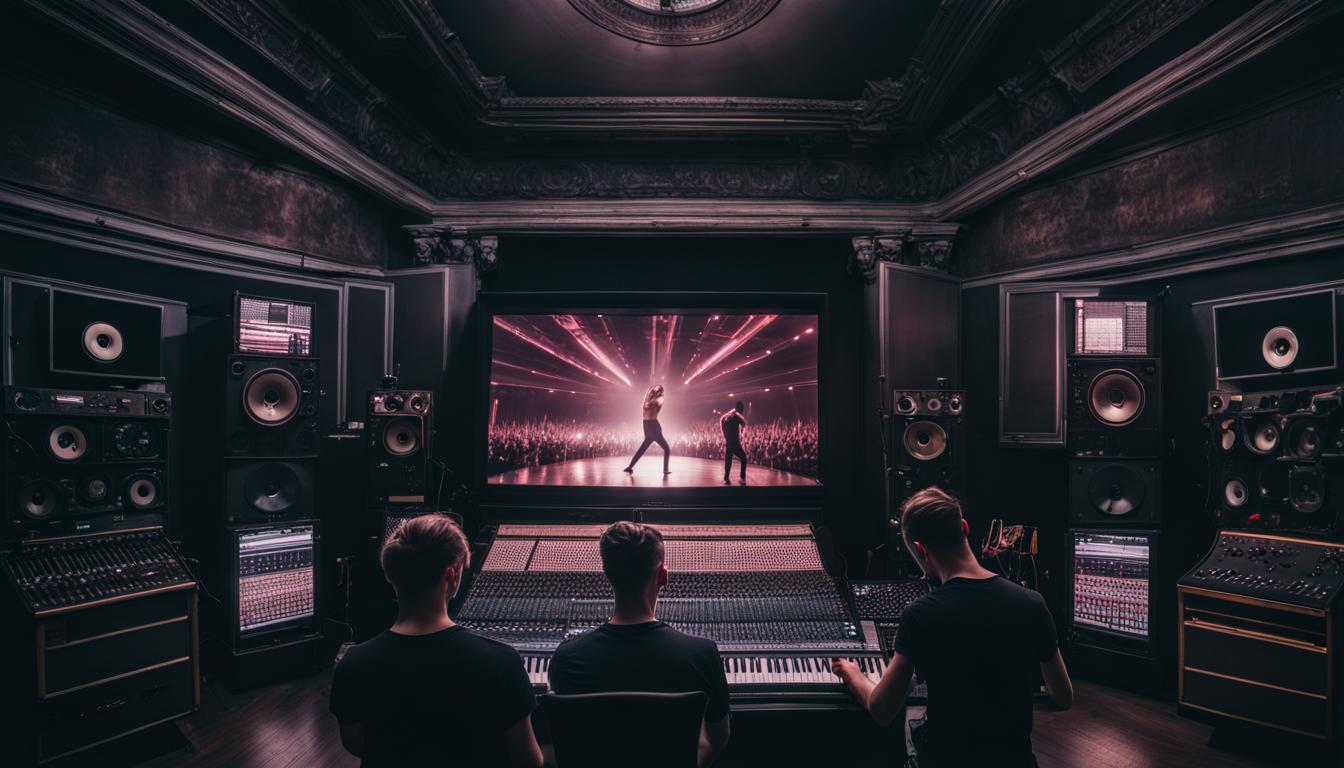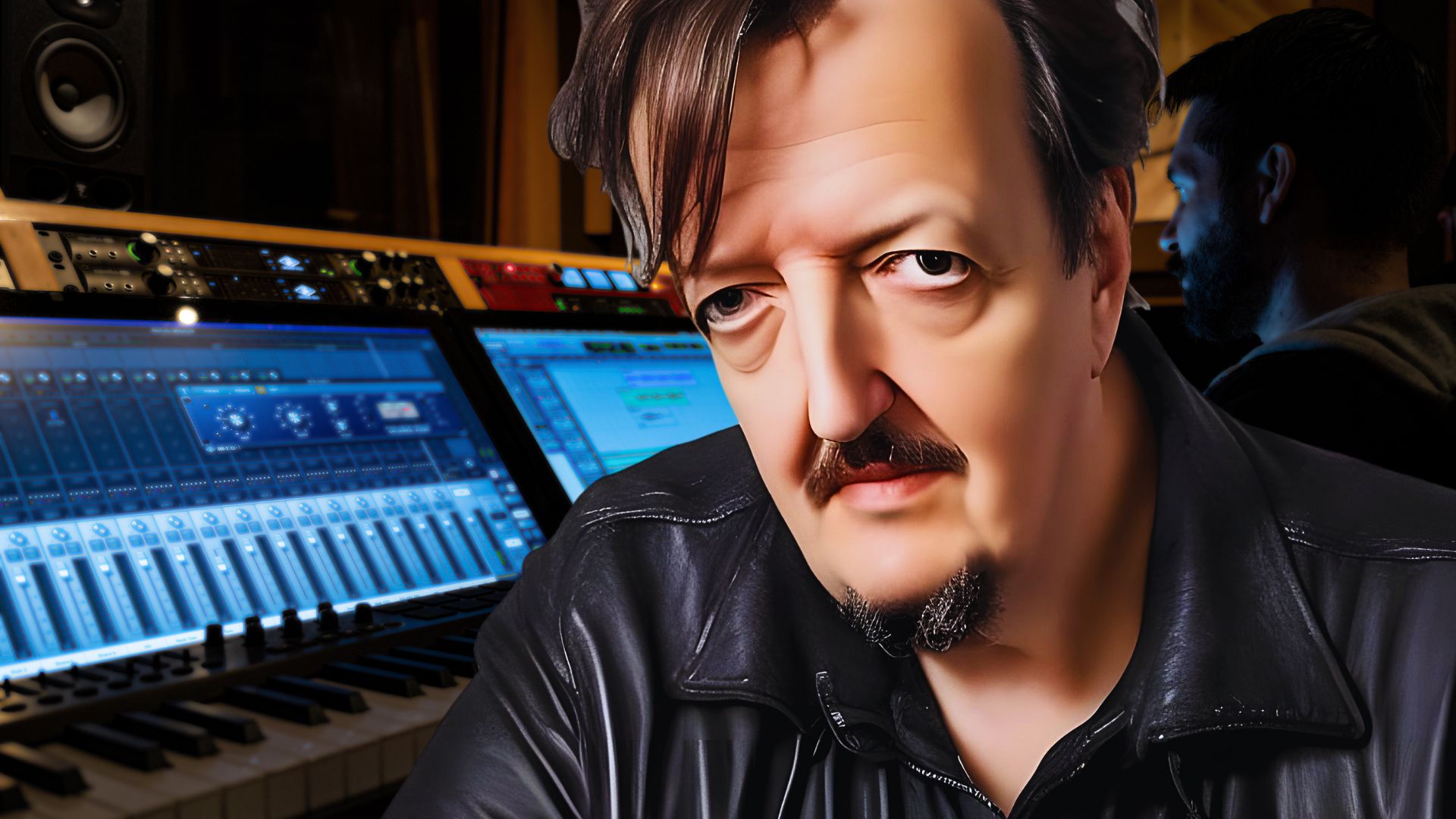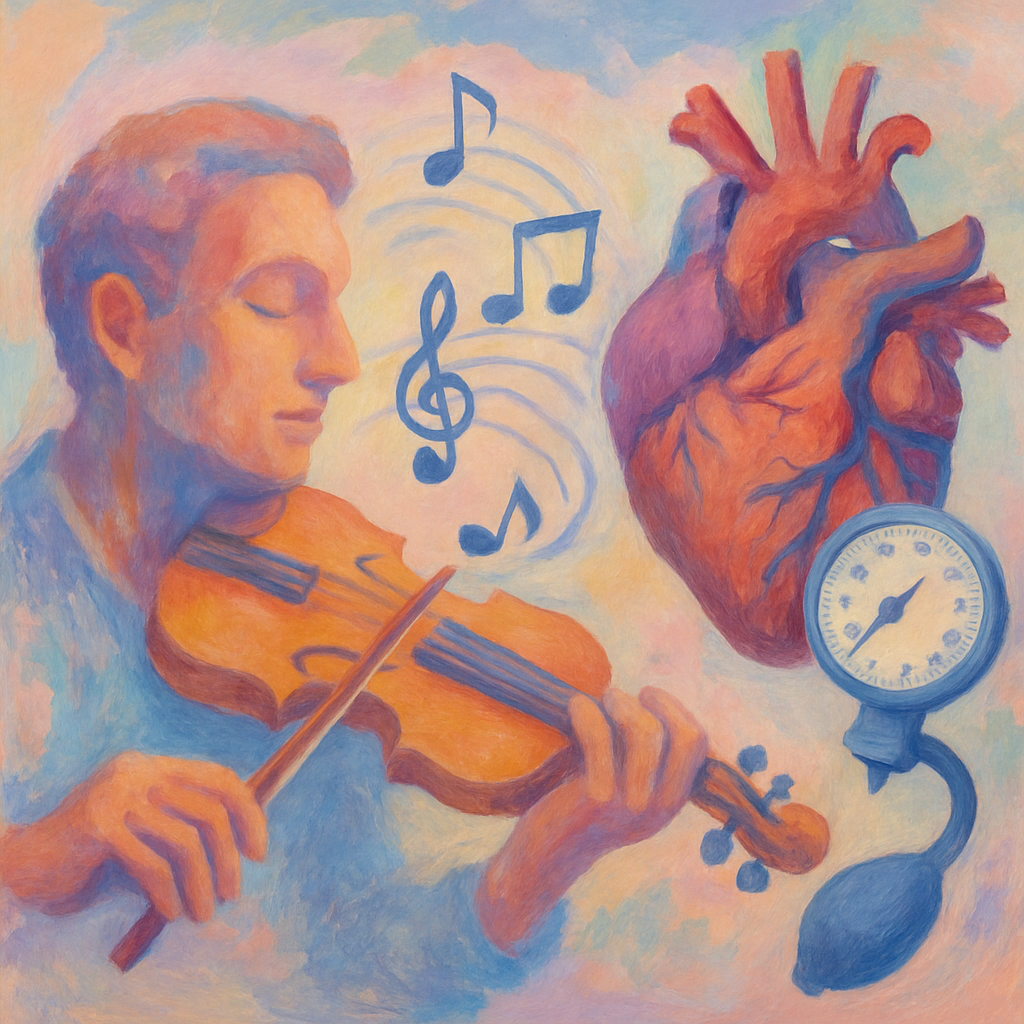I sit in the studio under the steady glow of soft lamps. Cables lie coiled at my feet, knobs glinting with quiet promise. My hands hover above keys and pads. No score lies open. No metronome ticks. The only instruction comes from this moment. I press a single key. A tone springs to life, holds for an instant, then fades. In the space between attack and release, nothing else exists.
This is not philosophy. It is the immediate encounter of sound and presence. I do not reach for meaning; I do not label what I hear. I perceive vibration. I feel it in bone and flesh. I allow the tone to pass through me unfiltered. In that interval before concepts form, sound and listener merge.
Listening requires no effort of doing. It requires removal of interference—the inner critic, the archive of past recordings, the blueprint for ideal performance. Technique and training matter only to clear space for presence. Skill refines attention but cannot substitute it. When hands move by habit, sound travels through empty channels. To counter this, I shift dynamics without warning, alter microphone position mid-session, and vary pad sensitivity unexpectedly. Each intervention dissolves routine and renews attention.
I tap a drum pad once. A solitary beat lands in the room. It resonates through wood, metal, and my own limbs. I feel its echo in muscle and marrow. I resist the urge to repeat it. Instead, I listen for the aftertaste of sound—its fading timbre, its memory in silence. That silent echo does not erase the beat. It holds it, connecting it to what will come next.
Silence is not an absence. It is the ground on which sound appears and returns. Between two notes, a pause carries memory of the first and anticipation of the next. It is not a void but a portal. In silence, ambient hums—air conditioning, distant traffic, the room’s natural resonance—become part of the composition. I allow these accidental sounds to coexist with deliberate gestures. They testify to the world’s voice.
When a melody emerges, I follow its shape rather than impose structure. If a sequence repeats, I let variation slip in as a guest. Sometimes the instrument suggests a shift—a harmonic detour, a rhythmic hiccup. I yield to these invitations. Each variation shifts the field. Each shift calls for renewed listening.
Proficiency can betray immediacy. Perfect technique can anchor me in expectation. To maintain openness, I alternate between technical and intuitive modes. One moment I monitor meters, adjust EQ, focus on gain structure. The next I close my eyes, breathe, feel vibration. I toggle between control and surrender. Control refines clarity; surrender reveals surprise.
Recording holds tension between preservation and performance. I press record to capture dialogue between room and instrument, then pause to continue playing without documentation. Recording can seduce me into performance for no audience. I resist that seduction. I record only when presence deepens, not when proficiency shines. Most takes remain unrecorded—ephemeral testaments to what cannot be archived. Their vanishing frees me from comparison.
Later, I listen back with headphones. I do not judge quality. I listen for trace memories of attention. I note how a brief silence reads as a musical gesture. I feel how one pad hit resonates against another. I notice how the room colors decay. I allow this playback to renew my original encounter rather than measure it.
Beyond the studio, listening remains practice. On afternoon walks I tune into footsteps on pavement, wind in foliage, heartbeats under skin. These rhythms connect to studio work. Life tempo becomes music tempo. I learn to match pace to context rather than impose my own.
In conversation, listening shapes exchange. I meet a friend’s gaze, attend to inflection, register silence as part of meaning. I resist filling pauses. I allow words and silences to shape dialogue. Presence replaces presumption. The conversation flows as shared improvisation rather than rehearsal.
Returning to the studio, I recall that reciprocity. I play a simple chord. I record how it touches mood. I adjust sustain to honor that mood. I observe how room acoustics color the chord’s tail. I learn from that color.
Microphones mediate presence. I move them inch by inch, listening to how position alters overtones. I chase curiosity over perfection. A mic slightly off-axis may reveal hidden timbral shifts. I listen, reposition, listen again. Each adjustment uncovers nuance.
Musician and instrument enter a reciprocal loop. Sound enters my body; breath and intention shape it; resonance returns. No hierarchy separates actor from acted upon. Presence unfolds as process.
I stop. I survey cables, faders, lamps. I realize presence persists beyond performance. Even when I play nothing, even when I speak no word, presence resonates. Silence hums with potential. This hum guides composition, recording, performance, life. I no longer chase results. I attend to specificity of each moment without comment, analysis or expectation.
Over time I have noticed that certain tones align with shifts in awareness. A sustained perfect fifth between C and G settles the nervous system. Its consonance invites calm. By contrast, the minor second—a semitone—creates a subtle tension in the body, a prickle at the base of the skull that can sharpen focus or evoke unease. I experiment with these intervals in improvisation. I linger on a semitone flicker, noticing how my breath deepens. I release into a perfect fifth and feel shoulders drop. Between those intervals, I place silence—not as empty air but as a carrier of transformation. That silent gap holds the tremor of expectancy, the felt aftershock of sound. In those pauses, meditative attention crystallizes.
My approach draws on traditions where listening itself is practice. In Japan, the concept of ma—emptiness between knots—treats silence as essential musical element. Shakuhachi players cultivate breath control and mindful awareness, hearing each inhale and exhale as part of the music. Tibetan bowl practitioners place the vessel on a cushion, strike it, then withdraw the mallet to let tone and silence unfold together. I study recordings of Seattle minimalists and ancient gagaku ensembles alike, noticing how the space between notes carries intention. From these models I learn that sound does not stand alone; it lives in relationship with cultural ideas of presence.
Resonance spaces shape perception. A wooden parquet floor emphasizes mid frequencies, warming piano chords. Concrete walls accentuate low end, turning kick drums into subsonic pulses that I feel in my sternum. An anechoic chamber, by contrast, renders even quiet sounds unnervingly exposed. I move portable panels to sculpt the room. I place metal sheets behind speakers to add metallic glint to overtones. I suspend fabrics to dampen harsh reflections. Each material choice affects not only sound but state of mind: wood invites comfort; stone evokes austerity; mesh fabrics blend intimacy and air. By curating the acoustic environment, I curate the listener’s body response.
At the core lies the principle of wu-wei—non-doing. I do not will music into existence so much as allow it to reveal itself. In practice, this means sitting quietly before any gesture, waiting for impulse rather than conjuring it. If no impulse comes, I remain still. No pads, no keys, no signal. I sit in silence, feel breath, sense the room’s pulse. After a time, a thought may arise: a rhythm, a texture, a melody. I trust that emergence and follow it. Sometimes weeks pass without striking a note. Yet the discipline of stillness keeps attention sharp. When I return to instruments, I encounter fresh possibilities rather than stale ideas.
Through this balance of tone, tradition, space and stillness, I have learned that music is less a product and more a reflection of listening. The meditative power of intervals, the wisdom of ancient practices, the character of resonance materials, and the art of non-action intertwine in every moment at the console. Each session becomes an exercise in presence. Each sound, each silence, each adjustment is an invitation to deeper awareness. I press a key again. A tone emerges. I listen. And I let go.





